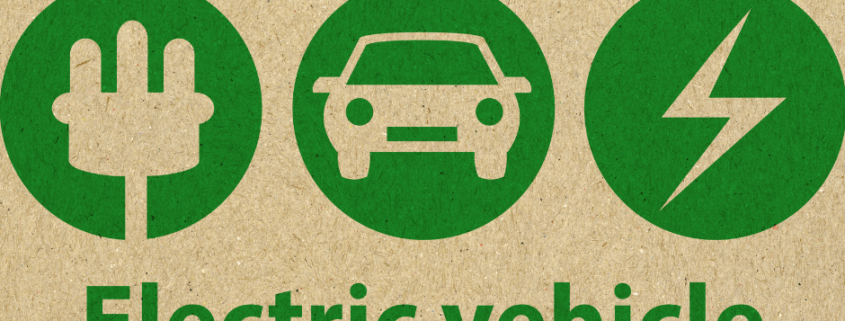Electric Vehicle Credit Undergoes Major Overhaul
- Learn about the final assembly requirement.
- Find information about the August 15 deadline.
- Get information about the Transition Rule.
- Learn specifics about the new law.
- Find information about the taxpayer income limit.
- Learn about the manufacturer's suggested retail price limitation.
- What is the new vehicle definition?
- Learn how the transfer of credit to the dealer can work for you.
- Find information about the credit for used vehicles.
With the recent passage of the Inflation Reduction Act of 2022, the electric vehicle credit has undergone some major changes. Although most of the changes take effect in 2023, to qualify for the current credit, vehicles purchased after August 15, 2022, must meet the final assembly requirement of the new law.

Final Assembly Requirement
That requirement necessitates vehicles sold after August 15, 2022, undergo final assembly in North America.
"Final assembly" means the manufacturer must produce new clean vehicles at a plant, factory, or other place located in North America from which the vehicle is delivered to a dealer with all component parts necessary for the mechanical operation of the vehicle included with the vehicle.
The U.S. Department of Energy has prepared a preliminary list of Model Year 2022 and early Model Year 2023 vehicles that may meet the final assembly in North America requirement.
The current law phasing out the electric vehicle credit once a manufacturer has produced 200,000 vehicles has been eliminated beginning in 2023. However, it still applies to vehicles sold in 2022. Even though those vehicles meet the final assembly requirement, because of the 200,000 limit they may not qualify for credit or reduced credit in 2022. However, they will again qualify in 2023 under the new rules.
The U.S. Department of Energy list tags those that have reached the 200,000 limit. Visit the IRS site for a list of qualifying vehicles to see if a vehicle might still qualify for a reduced electric vehicle credit.
Transition Rule
The legislation also provides a transition rule where a taxpayer who, from January 1, 2022, and before August 16, 2022, purchased, or entered a written binding contract to purchase, a new plug-in electric drive motor vehicle and placed that vehicle in service on or after August 16, 2022, may elect to use the credit rules in effect before the Inflation Reduction Act changes, thus avoiding the final assembly and other requirements of the new law.
The New Electric Vehicle Credit Law
The new law is generally effective beginning January 1, 2023. It includes some new stringent requirements including that the critical minerals and other battery components used in the manufacture of a qualifying vehicle be from North America. The government is phasing in this requirement through 2029 because of the current limited availability of these critical minerals. This gives manufacturers time to develop North American sources for these materials.
Also beginning in 2023, the law imposes income limits on who qualifies for the credit. Limits apply to the costs of the vehicles eligible for the credit as follows:
Income Limit for the Electric Vehicle Credit
No credit is allowed for any tax year if the lesser of the MAGI of the taxpayer for the:
- Current tax year, or
- The preceding tax year
Exceeds the threshold amount as indicated in the table below. Thus, there is no phaseout; just one dollar over the limit, and taxpayers will receive no credit.

MAGI means adjusted gross income increased by foreign earned income and housing exclusions and excluded income from Guam, American Samoa, the Northern Mariana Islands, and Puerto Rico.
Manufacturer's Suggested Retail Price Limitation
No credit is allowed for a vehicle with a manufacturer's suggested retail price of more than the following:
Vans, sport utility vehicles, and pickups: $80,000
Other vehicles: $55,000
New Vehicle Definition
Where under prior law a qualifying vehicle must have had a battery with a minimum of 4 kilowatts-hours, after 2022 a qualifying vehicle’s battery must have a minimum of 7 kilowatts-hours.
Transfer of Electric Vehicle Credit to the Dealer
After 2022, the new law adds an interesting twist. It allows a taxpayer to utilize the credit to reduce the vehicle’s cost. This is accomplished by the taxpayer, who, on or before the purchase date, can elect to transfer the clean vehicle credit to the dealer from whom the taxpayer is purchasing the vehicle in return for a reduction in purchase price equal to the credit amount.
Making the election cannot limit the use or value of any other dealer or manufacturer incentive to buy the vehicle, nor can the availability or use of the incentive limit the ability of the taxpayer to make the election.
A buyer who has elected to transfer the credit for a new clean vehicle to the dealer and has received credit from the dealer but whose MAGI exceeds the applicable limit must recapture the amount of the credit on their tax return for the year they placed the vehicle into service.
Credit For Used Vehicles
The new law includes a credit for used clean vehicles that cost $25,000 or less that are purchased from a dealer. This credit is limited to the first time the vehicle is resold. It is available only to taxpayers whose MAGI is no more than half that of the MAGI limit for the new clean vehicle credit. The credit amount is the lesser of $4,000 or 30% of the purchase price. However, other details of this credit need further guidance from the IRS. Watch for additional information in the future.
Have questions about these new rules on the clean vehicle credit? Call Fiducial at 1-866-FIDUCIAL or make an appointment at one of our office locations to discuss your situation.
Ready to book an appointment now? Click here. Know someone who might need our services? We love referrals!









